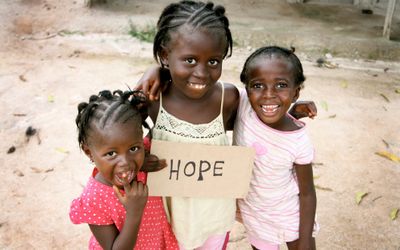PBS: Escaping Eritrea … [Read More...] about ካብ ውሽጢ ቤት ማእሰርታት ኤርትራ
Why too many African countries are stuck in the Third World
Sandile Swana and Lumkile Mondi | July 14 2016 | Business Day
ONE of the most hotly debated topics in development economics is: what does it take to steer a poor country from Third World to First World status?

It is a debate of particular relevance in Africa, which is home to a large number of countries in the Third World category.
It also has some of the fastest-growing economies in the world.
In recent years, economists have used the terms “developed countries” to denote First World and “emerging markets” to refer to Third World countries. We believe that the use of these terms camouflages the extent of underdevelopment and challenges faced by the poorest. The terms are also viewed as a means of excusing First World responsibility to provide material support and solidarity.
Third World countries are characterised by a big agrarian sector and a huge proportion of the population living in rural areas. They are also marked by low productivity, disease, high infant mortality, lack of potable water and poor infrastructure.
First World countries are highly urbanised, and citizens enjoy universal access to health, education and housing. They also exhibit high productivity, strong service sectors and freedom of movement because of infrastructure.
Within decades, many Asian countries made the transition from Third World status to First World status.
Some countries in Africa are well placed to make this transition. These include Ethiopia, Rwanda, Uganda and Kenya, Ghana, Côte d’Ivoire Gabon, Mozambique, Angola and SA.
We believe that these countries can emulate the “Asian miracle”, but only if governments take decisive steps to achieve certain outcomes. East Asia has a remarkable record of high and sustained economic growth. From 1965-1990 the 23 economies of East Asia grew faster than those of all other regions of the world. Most of this achievement is attributable to seemingly miraculous growth in the eight economies studied.
First, gross domestic product (GDP) per capita or the average household income must be improved. It is impossible to sustain important aspects of human development without this.
Second, state intervention and robust national leadership are crucial. The economic strategies of successful countries were influenced by leaders who were committed to rapid development. They had a focus on growing human capital. This in turn led to increased productivity, increased household incomes and an improvement in the general standard of living.
The Asian example
Lee Kwan Yew, the first premier of Singapore and largely considered the founding father of that nation, is arguably the one Asian leader who popularised the idea of moving from Third World to First World in one generation.
Timeframes matter when attempting to understand how long it takes to make the transition. Examining the economic trajectory of some countries between 1960 and 2016 suggests that it can take about 25 years to turn a nation from Third World to First World.
Japan was the outright leader, but in time other Asian nations started leading in certain industries. Examples include Taiwan and South Korea. They had no mineral wealth. What they had, instead, were national systems of innovation and, critically, they invested in human capital. They copied technologies from First World economies until they were on par and even overtook the First World countries. In many cases they started off equal or lower in GDP per capita when compared with a number of African countries.
For example, in 1957 Ghana and South Korea had about the same per capita GDP. South Korea had a national leadership focused on the development of state institutions that were focused on rapid, technology-intensive economic development. Ghana has no programmes of similar nature on record.
Taiwan’s economy underperformed under Japanese colonial rule between 1895 and 1945. In the 1950s the country was an agrarian economy with the same living standard as Congo. But by 2010 it had overtaken its former colonial master to become the number one producer of semi-conductors in the world.
The point is that a colonial past is no excuse for Africa’s failure so far to catch up, emulate and leapfrog.
Income growth
Success stories of the kind envisioned here have been controversially called miracles. Yet there is no magic.
Studies have shown that nations that made serious economic progress focused on growing the average income of their citizens. For example, Japan focused on this between 1950 and 1972 and doubled its GDP per capita.
Nineteen out of 23 of the poorest nations in the world are in Africa. Of the 54 African countries, about 19 are represented on the world’s poorest list.
Yet no African leader has pursued with single-minded determination the improvement of household incomes. Instead their focus has generally been on economic growth with trickle down being viewed as a panacea for higher GDP per capita.
Even in SA there is no set period for the poor in the black majority (90% of the population) to move into the middle class proper, with access to tertiary education, white goods and shelter, and annual household expenditure close to $36,500.
Household incomes improve when the largest number of people get involved in technology-based productivity work. Even agriculture needs to be hi-tech and include agro-processing. This is a path currently being followed by Ethiopia.
The role of the state
In Asia and Europe state intervention was seen as a key strategic tool to stimulate and guide development without impeding the private sector. States crowded in private capital in support of investment in infrastructure and human capital formation.
This represented an approach that can be described as state pragmatism rather than simply leaving matters to the markets, as neoliberals argue, or by imposing state control, as ideologues on the left have argued.
